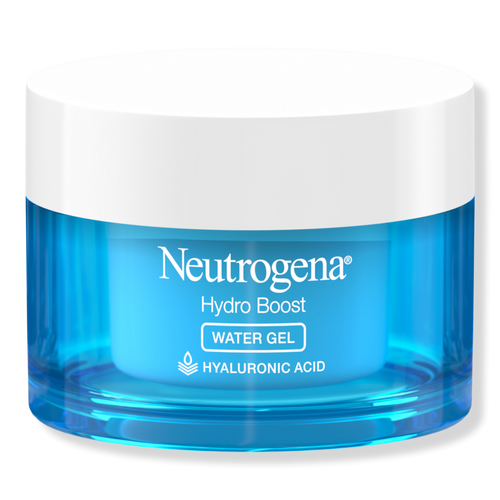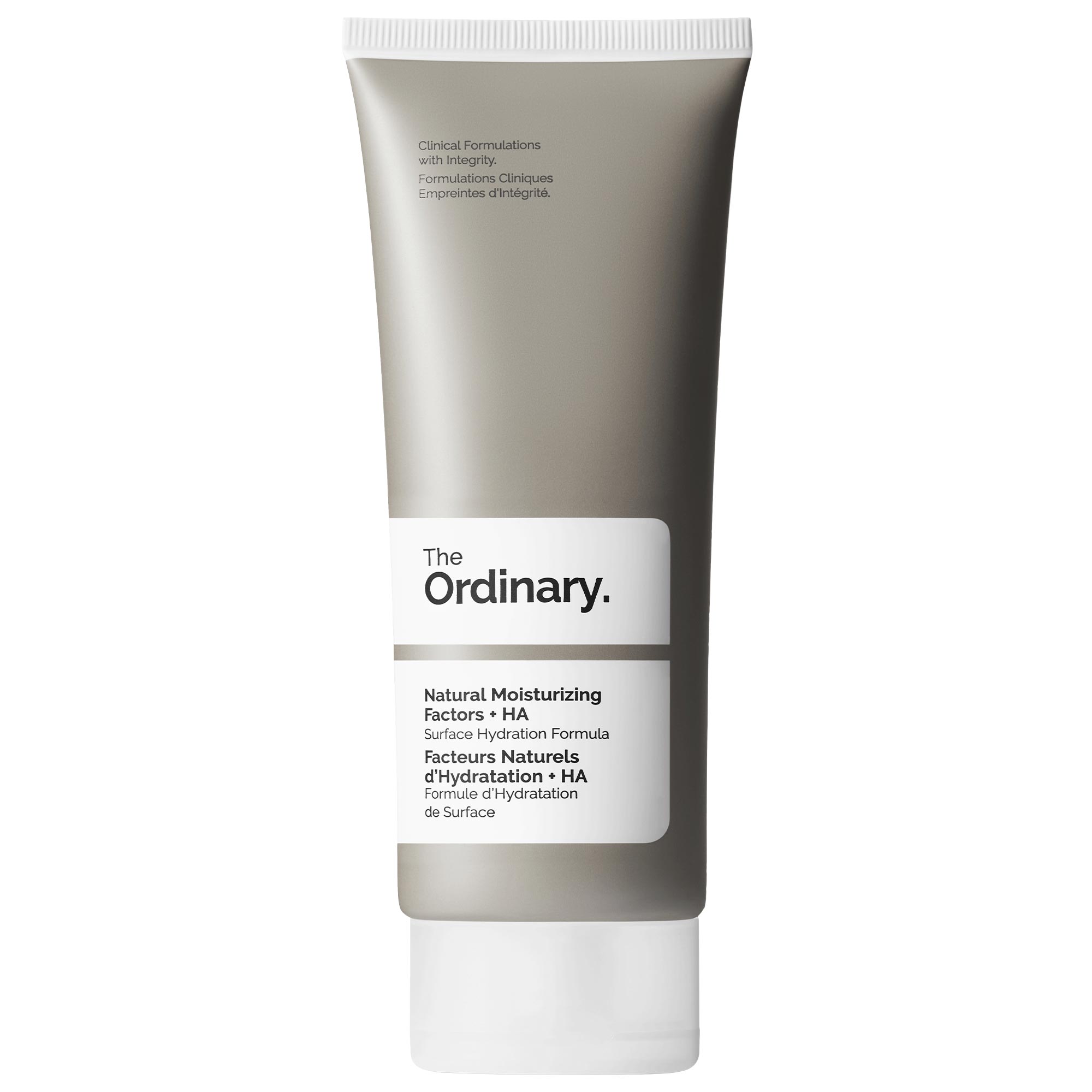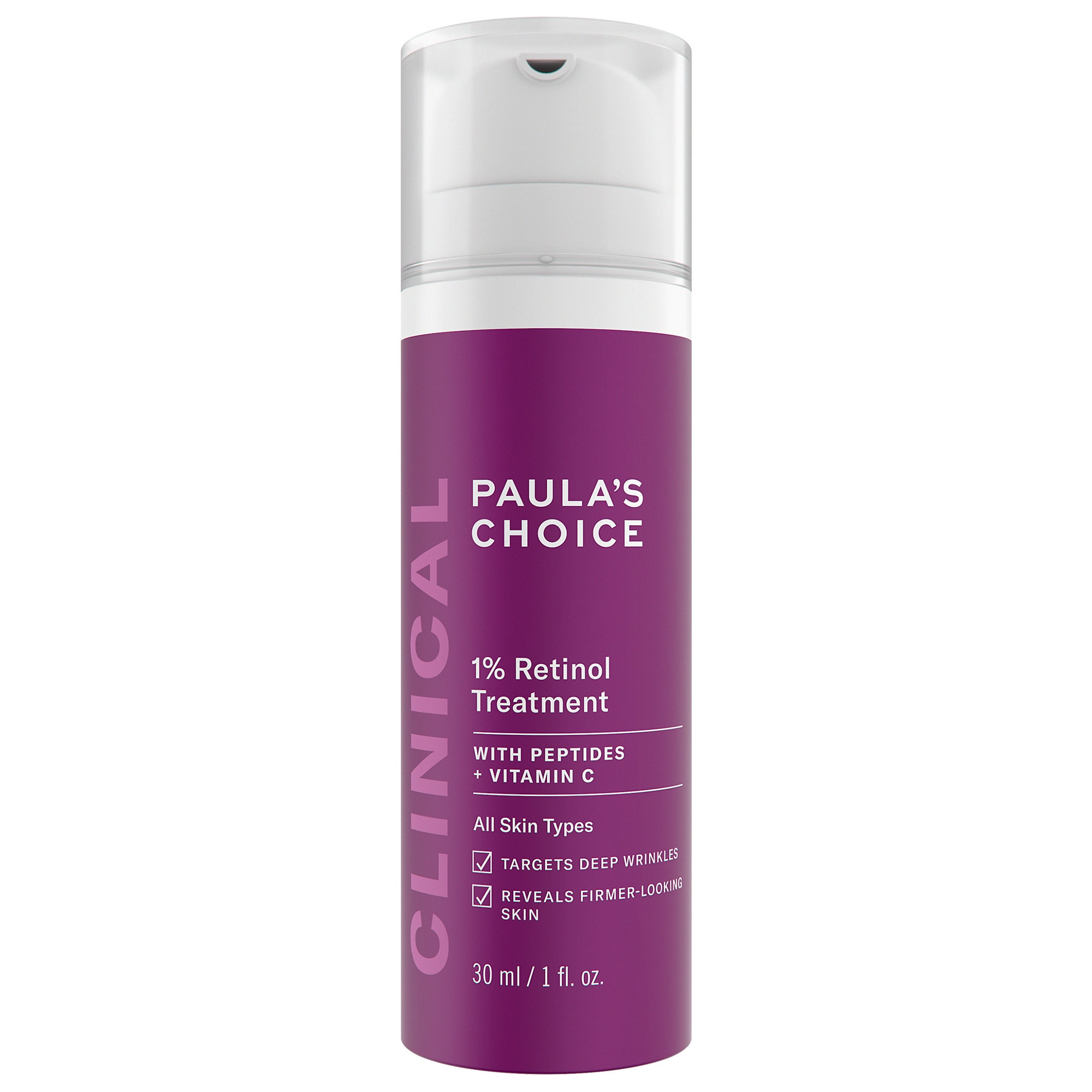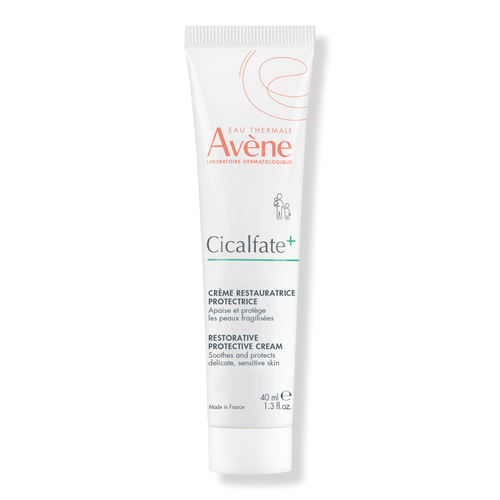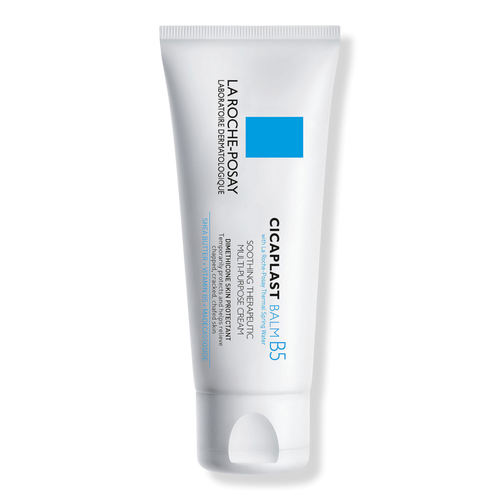The Retinol Skin Sandwich Method Is the Only Way My Skin Stays Hydrated in the Winter
Finally, a TikTok trend I'm not skeptical of.

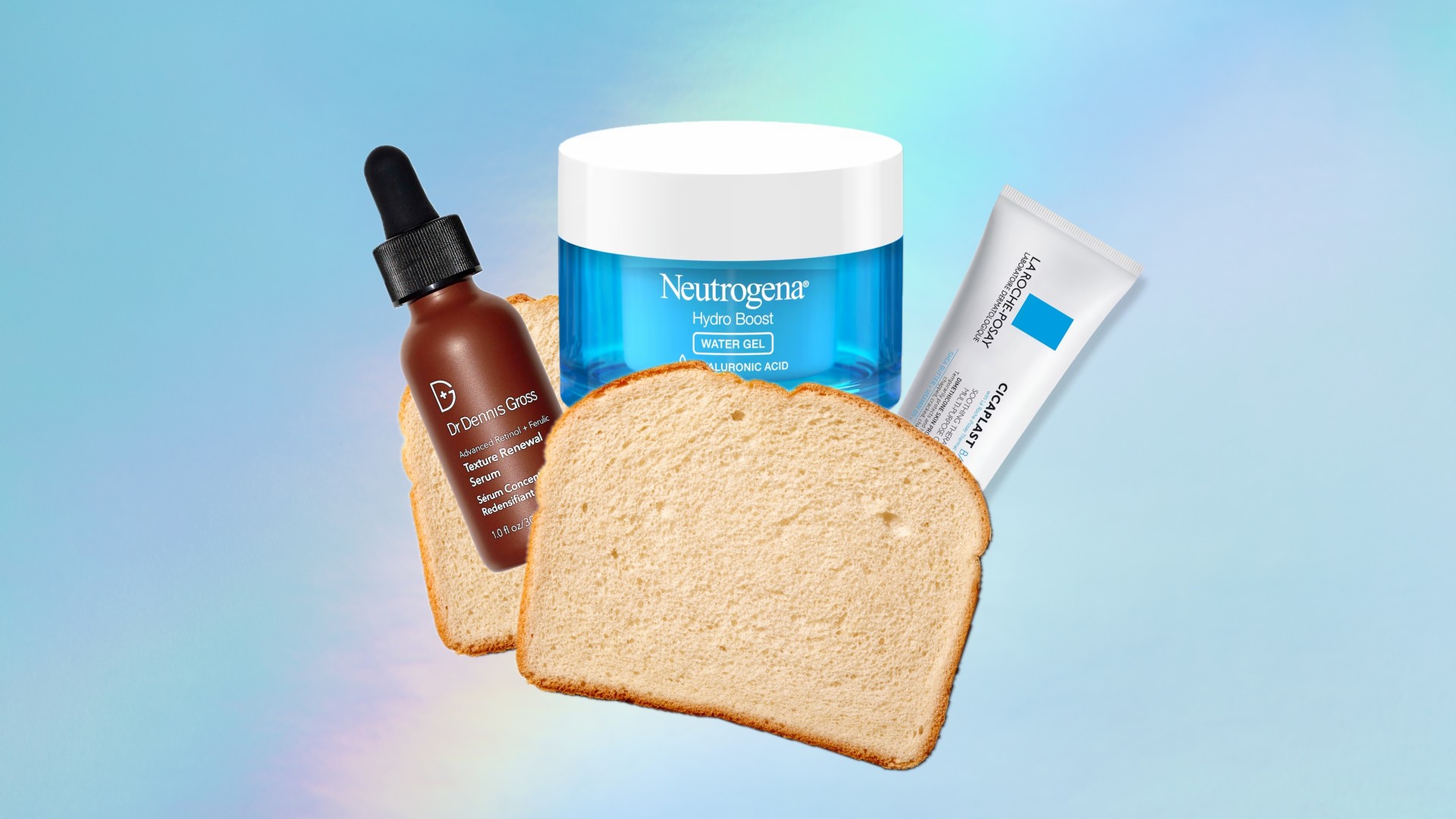
I'll admit it: I'm skeptical of almost every viral skincare trend these days. Still, every once in a while, in between the less advisable fads like applying beef tallow to your skin (don't do it) and contouring your face with sunscreen (also, no), a tip that’s actually worthwhile and derm-approved pops up. This time, it’s the retinol skin sandwich method.
The gist: Instead of applying your retinol or exfoliating treatments—which provide benefits such as removing dead skin, evening out skin tone, and speeding up cellular turnover—as the first step in your skincare routine, you apply it between two moisturizers. The active ingredients are still able to penetrate and be effective, but the moisturizer duo helps temper the irritating side effects, literally and figuratively. I'd compare it to drinking milk before and after a spicy food—you'll still taste all the flavors, but you're probably going to sweat a bit less.
"Retinol loosens the 'glue' between surface cells so they shed faster," says Helyn Alvarez, MD, a board-certified dermatologist at Westlake Dermatology in Austin. "At first, the [skin] barrier is a bit disrupted, water escapes more easily, and your skin can feel dry, pink, and stingy." While oilier skin types can mostly tolerate the side effects, those with sensitive or dry skin might want to consider using the dermatologist-approved sandwiching method. You can increase your tolerance, prevent peeling, and, most importantly, preserve the integrity of your skin barrier.
To learn more about skincare sandwiching and its benefits, read ahead.
What Is the Retinol Skin Sandwich Method?
Simply put, “sandwiching” refers to a specific method of layering your skincare products. It's stacking them up in the right order, kind of like you would a loaded BLT. It usually involves applying a gentle moisturizer or serum, adding an active on top (think: retinol or exfoliating acid), and then topping that off with another heavier moisturizer or balm.
According to board-certified dermatologist Debbie Palmer, DO, the goal of this method is to ensure that active ingredients remain effective without irritating the skin. For example, suppose an ingredient like retinol—which has a reputation for irritating the skin—is applied on top of a thin moisturizer. The moisturizer can act as a barrier and deterrent to irritation. “Think of the two moisturizer layers as the bread and the active ingredient, like a retinoid, as the filling,” says Dr. Alvarez. The key, however, to maximizing results is to pick the best moisturizer for the job. "A thin, water-based or light oil in water moisturizer adds comfort without creating a heavy barrier," says Dr. Alvarez, so the retinoid is still able to penetrate and get to work under the skin's surface.
There is a little catch: even though the sandwich method can technically be done with other actives like vitamin C (for brightening and protecting against sun damage) or AHAs and BHAs (for exfoliating), Dr. Alvarez recommends using the method mostly for retinoids. “With acids, the idea gets tricky,” she says. “Acids like glycolic work because they are a little more acidic than your skin. A moisturizer underneath can raise the skin’s pH and create a light barrier. That means less acid reaches the top layer of skin where it needs to work, so results can drop.”
Get exclusive access to fashion and beauty trends, hot-off-the-press celebrity news, and more.
Should I Be Doing The Retinol Skin Sandwiching Method?
Pretty much anyone can try the sandwiching method, but Dr. Alvarez says it’s mostly beneficial for people who are new to using retinoids, people with dry or dehydrated skin, and people with sensitive skin. Since sandwiching usually puts an emphasis on moisture retention, this could also be worth it if you live in climates that are colder or lower in humidity, or if you’ve recently spent time on a plane.
That said, Dr. Alvarez also recommends skipping the sandwiching method if your skin is generally oily or congested. “Extra emollients can feel heavy and raise comedone risk,” she says. “Instead, use one light lotion or a gel and keep the T-zone minimal.” You can also avoid this one if your skin already tolerates actives pretty well or if you have an issue like perioral dermatitis. “Multiple layers of product can flare these conditions,” she adds. “Keep formulas simple and avoid rich textures on affected zones.”
What Are the Benefits of The Retinol Skin Sandwiching Method?
As previously stated, the main benefit of the sandwiching method is increasing your skin’s tolerance to active ingredients (namely, retinol), but of course, there are other advantages. Dr. Alvarez notes that using this method can also strengthen the skin barrier, as increased moisture helps reduce water loss and maintain the outermost layer of the skin in a healthy and comfortable state.
In addition to preventing irritation, adding a buffer before an active ingredient can decrease your risk of over-exfoliation.
How Do I Create a Retinol Skincare Sandwich?
- Apply a Lightweight Moisturizer to Clean Skin
You should start off by cleansing your skin and rinsing away any dirt, oil, or makeup—having a clean surface will ensure that the active ingredients you use are actually able to penetrate the skin. Then, pat your skin with a cloth until it’s still slightly damp. “A little water helps humectants pull moisture into the stratum corneum,” Dr. Alvarez says. For this step, opt for a water-based moisturizer or something gentle that plays well with other ingredients, like hyaluronic acid or glycerin.
- Go in With Your Retinoid
Once your moisturizer has dried down, apply a retinoid or another active of your choice. “For retinoids, use a pea-sized amount for the whole face,” Dr. Alvarez adds. “Avoid the eyelids, the corners of the nose, and the edges of your lips.”
- Lock it in With a Balm
Next, seal everything in with a heavier moisturizer or balm—this’ll prevent water loss overnight or throughout the day. (Note: this method may sound similar to the viral slugging trend, but the difference here is that slugging focuses on adding a single, occlusive layer of petroleum or ointment as the last step in your routine to seal in moisture overnight, says Dr. Palmer.)
Why Trust Marie Claire
For more than 30 years, Marie Claire has been an internationally recognized destination for news, fashion and beauty trends, investigative packages, and more. When it comes to the products Marie Claire recommends, we take your faith in us seriously. Every product that we feature comes personally recommended by a Marie Claire writer or editor, or by an expert we’ve spoken to firsthand.
Meet the Experts

Dr. Helyn Alvarez is a board-certified dermatologist at Westlake Dermatology in Austin, TX.

Dr. Debbie Palmer is a board-certified dermatologist and the medical eirector and co-founder of Dermatology Associates of New York, in Harrison, NY.

Danielle Jackson is the senior beauty writer at Marie Claire. She has nearly a decade of experience covering beauty, lifestyle, and entertainment and was previously the senior beauty editor at Women's Health, where she thoughtfully covered topics related to skincare, haircare, aesthetics, and wellness. Before that, she spent three years as an assistant beauty editor at PS, and in the years since, her work has appeared in titles like Vogue, InStyle, Glamour, and more. Danielle graduated from the University of Georgia with a BA in English, and has lived in Brooklyn for almost ten years. When she's not writing, you can find her reading romance novels and talking about sunscreen. You can find her on Instagram @danielleknecole.
